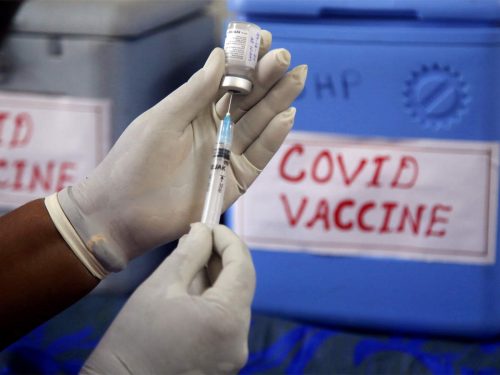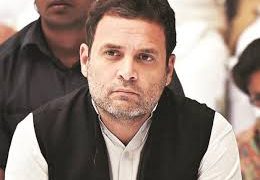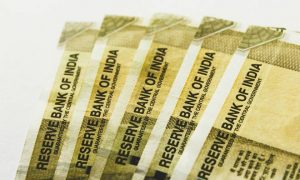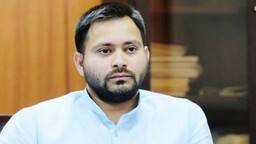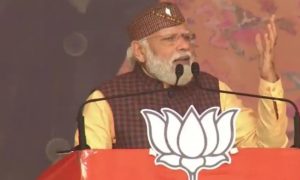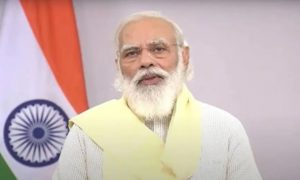While thousands of people are still dying each day in India due to the COVID-19 pandemic and the only means to protect people is mass vaccination, thus to develop hard immunity. A strategy that has worked for most of the developed countries, where after the first wave of COVID-19 most of the countries made advance orders to vaccine manufacturing companies and thus, focused on mass vaccination.
As a result, 60-70% of the people of those countries got vaccinated before the second wave of the pandemic. Thus, they have been quite successful in terms of stopping the spread of the disease from making further inroads and causing damage. India blatantly ignored the idea of mass vaccination after the first wave of COVID-19. Instead, it was busy holding mass election rallies and religious gatherings.
These caused a monumental loss in India in its different institutions, trade, market, livelihood till this moment, and the citizens are bearing the cost with the loss of life and livelihood each day. Lately, India too started the vaccination drive. However, vaccinating such as a huge population needs lots of resources and manpower, something India is finding difficult at this moment. Many states, particularly the urban areas are complaining of a shortage of COVID vaccines.
Whereas, in rural areas, the story regarding vaccination is mostly different where people are not willingly coming out for vaccination, the reasons being many. Fear of injection, misinformation, misattributions, suffering, health beliefs, superstition, death or COVID infection post-vaccination and the influence of social media or YouTube videos has become major obstacles in pushing people away from being vaccinated.
Sultana, a 49-year-old resident of Tulargram village of Assam’s Cachar district, feared injecting vaccine. Not just Sultana, many feared injections in her family too, she said. While she was asked about the reason for not being vaccinated, she said, “I am doing well and good, we don’t believe in vaccination, it is a God-given disease and therefore, God will protect us”.
She further said, “We don’t take our newborn for vaccination too, since, those injections cause lots of side effects and pain to the newborn in the early days of life”.
Raju, 27, a daily wage earner from Sonai Bazaar of Cachar district, is hounded by the death of his neighbour after four days of vaccination. Raju is married and living with his three children. The state-imposed lockdown and the other actions undertaken to control the spread of the pandemic has brought down his regular income for the last few months.
While expressing his deplorable condition, Raju said, “If anything happens to me after being vaccinated, who will look after my wife and the children. There is no unemployment allowance from the state at this difficult time, so with an empty stomach, I cannot afford to sit at home ideally. Also, I have heard about the various side effects of the COVID vaccine, so in cases of any serious side effects, who will offer me the medical care.”
Further, the current political discourse and the bombardment of electronic media promoted the mistrust of Ajim, a 23-year-old who used to work as a security guard in Bengaluru, towards vaccination. While expressing his fear of vaccination, he said, “I have witnessed many deaths of people in Bengaluru who are being vaccinated.” Ajim further added, “This could be a trick of BJP government to kill Muslims, since, they are very uncomfortable with Muslims. We have seen what they and their propaganda machinery did with the Tablighi Jamaat which is still hounding us.”
Lalmoni, 44, a businessman, who hails from Kazidar village of Southern Assam, while expressing reasons for him not taking the vaccine, said, “In today’s world, nothing could be found free of cost. Even for a poison, which causes death, one has to pay. Hence, freely available vaccine, especially when such vaccination drive covers huge population free of cost is of no use”. He further added, “I will get myself vaccinated whenever there is a quality vaccine available in the market.”
Many COVID-19 positive patients went through a lot of suffering when they were either in institutional quarantine or under treatment in hospital. Starting from physical and social isolation, low-quality food, unclean bathroom and toilet, lack of regular medical check-ups, to lack of empathy from the end of the medical staffs including physicians, developed a sense of distress and irritation among many patients.
Hasina, a 27-year-old domestic worker heard about such a narrative from her employer who was tested COVID positive during the first wave of the pandemic. Hearing from the employer about his sufferings after being diagnosed with COVID, Hasina decided to stay away even from being tested and vaccinated for COVID. She feared, if she or any of her family members were found COVID positive during vaccination, they might suffer from the same.
Bodrul, a 29-year-old carpenter of Mazirgam village of Assam, spends most of his time watching Facebook or YouTube videos after returning from work each day. He has developed a negative impression of vaccination after watching some unauthentic videos. He believed that vaccination is a way to control population growth. While expressing his fear for vaccination, Bodrul told that those who were taking a vaccine for COVID would die after two years, and he came to know about it from a WhatsApp forwarded message of one of his friends.
Kutai, a 43-year-old fisherman, who was a strong follower of Baba Ramdev, firmly believed that vaccination was of no use. He had a strong belief in alternative medicine against modern allopathic medicine. He was using Coronil to boost up immunity to fight against coronavirus. He further questioned, “had vaccination been so effective, why have there been deaths of hundreds of doctors due to COVID-19”.
One could observe lots of contributing factors for the unwillingness of the people for vaccination which ranged from individual-level factors to the socio-economic and political aspects surrounding the individuals. These factors also varied from person to person, and it was reflected in their narratives. Indisposition for vaccination mostly developed out of fear, mistrust, feeling of insecurity, social stigma, misinformation, and negative influence of social media.
Different measures at both individual and collective levels need to be employed for helping people increase their understanding and thus improving the rate of vaccination. Engaging primary health workers such as ASHA, ANM, and Anganwadi Workers in building awareness, clarifying doubts and thus destroying myths associated with the COVID-19 vaccine through frequent home visits and community meetings could play a vital role. Having a good rapport with the community people and experience of working at the grassroots level, these primary health workers could be utilised to motivate people for vaccination.
Besides, as the majority of the people refusing vaccination are from rural areas, therefore, use of informal community leaders, village-level institutions, such as gram panchayat, ward members and their associates could play a crucial role in developing a sense of trust among people about COVID-19 vaccination. Even Gram Shaba could be used as a platform for putting up the right information about vaccination. Further, to develop awareness and building trust among the masses, the district administration in collaboration with civil societies and NGOs can play a vital role by making small video clips, putting up banners, and distributing pamphlets in the local language on COVID-19 at the places of worship and gatherings.
Moreover, the use of digital platforms such as Facebook, WhatsApp, YouTube etc. can play a significant role in reaching those people. Thus, facilitating inclusive community engagement, leveraging existing community networks, and cocreating with community leaders and health workers could be a way ahead to address the issue of vaccine hesitancy among the rural population.

